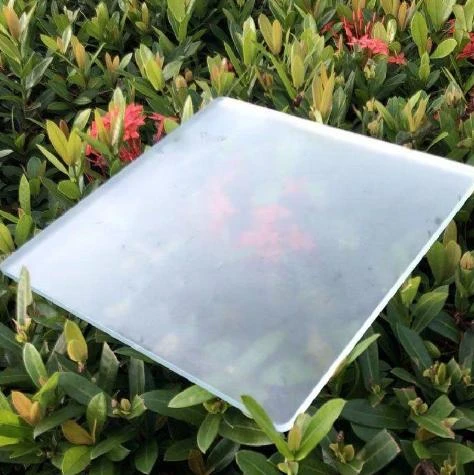The Significance of Monolithic Annealed Glass in Modern Architecture
Monolithic annealed glass is an essential material in modern architectural design, valued for its aesthetic appeal, functional properties, and versatility. This type of glass is produced through a controlled cooling process that minimizes internal stresses, resulting in a clear, uniform, and durable product. The increasing demand for innovative building materials has put monolithic annealed glass at the forefront of construction and design, making it a vital component of contemporary architecture.
To begin with, it is important to understand what monolithic annealed glass is. Unlike laminated or tempered glass, monolithic annealed glass consists of a single layer of glass that is typically between 1/8 inch to 1/2 inch thick. The annealing process involves slowly cooling the glass after it has been formed, allowing for the even distribution of thermal stress. This process not only enhances the clarity of the glass but also its resistance to minor impacts. While it may not offer the high levels of safety provided by tempered glass, it serves a multitude of purposes in various applications.
One of the most significant advantages of monolithic annealed glass is its optical clarity. This transparency allows natural light to flood interior spaces, promoting a sense of openness and connection to the outdoors. The incorporation of large glass panels into building designs can create visually stunning facades, enabling architects to merge functionality with artistic expression. The clean lines and sleek appearance of monolithic glass have made it a popular choice in modernist architecture, where minimalism is celebrated.
Furthermore, monolithic annealed glass is highly versatile. It can be used in a variety of applications ranging from windows and doors to curtain walls and skylights. This adaptability allows architects and builders to implement glass in creative ways, enhancing both the aesthetics and functionality of a building. In residential buildings, large glass openings can blur the line between indoor and outdoor spaces, creating a seamless transition that enhances the living experience. In commercial settings, glass facades can convey a sense of transparency and trust, appealing to customers and fostering a welcoming environment.
monolithic annealed glass
The energy efficiency of monolithic annealed glass has also improved significantly over the years. Advances in coating technologies have introduced low-emissivity (Low-E) glass, which can reflect heat while allowing visible light to pass through. This enhancement not only helps regulate indoor temperatures, reducing the need for heating and cooling, but also contributes to sustainable building practices. In a time when environmental considerations are paramount, the use of energy-efficient glass aligns with the goals of reducing carbon footprints and promoting sustainability in architecture.
However, it is essential to acknowledge that monolithic annealed glass does have limitations. While it is suitable for many applications, it is less impact-resistant compared to tempered glass, making it unsuitable for locations prone to severe weather conditions or high foot traffic. Consequently, architects must weigh the advantages and disadvantages when incorporating this type of glass into their designs.
As the demand for innovative and sustainable building materials grows, the role of monolithic annealed glass in architecture is likely to expand. Its ability to create visually striking designs while enhancing the energy efficiency of buildings makes it a valuable asset in contemporary construction. Additionally, as environmental consciousness becomes increasingly important, the development of new technologies to improve the performance of monolithic glass will play a crucial role in shaping the future of architecture.
In conclusion, monolithic annealed glass represents a confluence of beauty, functionality, and sustainability in modern architecture. Its optical clarity, versatility, and energy-efficient properties make it an invaluable material for designers and architects looking to push the boundaries of creativity while adhering to environmental standards. As building practices continue to evolve, the significance of monolithic annealed glass will undoubtedly remain a cornerstone of architectural innovation.
 Afrikaans
Afrikaans  Albanian
Albanian  Amharic
Amharic  Arabic
Arabic  Armenian
Armenian  Azerbaijani
Azerbaijani  Basque
Basque  Belarusian
Belarusian  Bengali
Bengali  Bosnian
Bosnian  Bulgarian
Bulgarian  Catalan
Catalan  Cebuano
Cebuano  Corsican
Corsican  Croatian
Croatian  Czech
Czech  Danish
Danish  Dutch
Dutch  English
English  Esperanto
Esperanto  Estonian
Estonian  Finnish
Finnish  French
French  Frisian
Frisian  Galician
Galician  Georgian
Georgian  German
German  Greek
Greek  Gujarati
Gujarati  Haitian Creole
Haitian Creole  hausa
hausa  hawaiian
hawaiian  Hebrew
Hebrew  Hindi
Hindi  Miao
Miao  Hungarian
Hungarian  Icelandic
Icelandic  igbo
igbo  Indonesian
Indonesian  irish
irish  Italian
Italian  Japanese
Japanese  Javanese
Javanese  Kannada
Kannada  kazakh
kazakh  Khmer
Khmer  Rwandese
Rwandese  Korean
Korean  Kurdish
Kurdish  Kyrgyz
Kyrgyz  Lao
Lao  Latin
Latin  Latvian
Latvian  Lithuanian
Lithuanian  Luxembourgish
Luxembourgish  Macedonian
Macedonian  Malgashi
Malgashi  Malay
Malay  Malayalam
Malayalam  Maltese
Maltese  Maori
Maori  Marathi
Marathi  Mongolian
Mongolian  Myanmar
Myanmar  Nepali
Nepali  Norwegian
Norwegian  Norwegian
Norwegian  Occitan
Occitan  Pashto
Pashto  Persian
Persian  Polish
Polish  Portuguese
Portuguese  Punjabi
Punjabi  Romanian
Romanian  Russian
Russian  Samoan
Samoan  Scottish Gaelic
Scottish Gaelic  Serbian
Serbian  Sesotho
Sesotho  Shona
Shona  Sindhi
Sindhi  Sinhala
Sinhala  Slovak
Slovak  Slovenian
Slovenian  Somali
Somali  Spanish
Spanish  Sundanese
Sundanese  Swahili
Swahili  Swedish
Swedish  Tagalog
Tagalog  Tajik
Tajik  Tamil
Tamil  Tatar
Tatar  Telugu
Telugu  Thai
Thai  Turkish
Turkish  Turkmen
Turkmen  Ukrainian
Ukrainian  Urdu
Urdu  Uighur
Uighur  Uzbek
Uzbek  Vietnamese
Vietnamese  Welsh
Welsh  Bantu
Bantu  Yiddish
Yiddish  Yoruba
Yoruba  Zulu
Zulu 

